What power adapter is needed to charge the iPhone 16e? Check out battery life, charging time, and benchmark results

The
iPhone 16e - Apple (Japan)
https://www.apple.com/jp/iphone-16e/
The size and appearance of the iPhone 16e are compared to the previous iPhone SE in the following article.
A quick photo review of the iPhone 16e, a budget model with a tax-included price of less than 100,000 yen, comparing the size and weight with the previous iPhone SE - GIGAZINE

·table of contents
◆ Check the battery life
◆I tried charging the iPhone 16e battery
◆Benchmark test
◆Check the battery life
First, we checked the battery life. According to Apple's specifications , it is 'up to 26 hours of video playback, up to 21 hours of video playback (streaming), and up to 90 hours of audio playback.' This time, we streamed a 4K video on YouTube with 100% battery, maximum screen brightness, and volume, and measured the continuous playback time until the battery ran out.
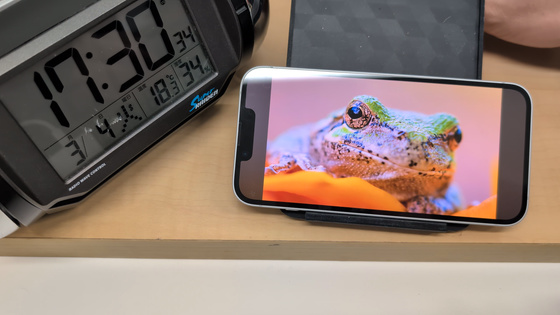
After about 8 hours of playback, a warning appeared indicating the battery was at 20%.
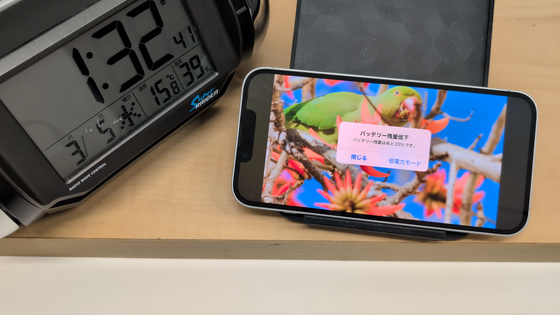
Approximately 9 hours after playback began, the battery was at 10%.
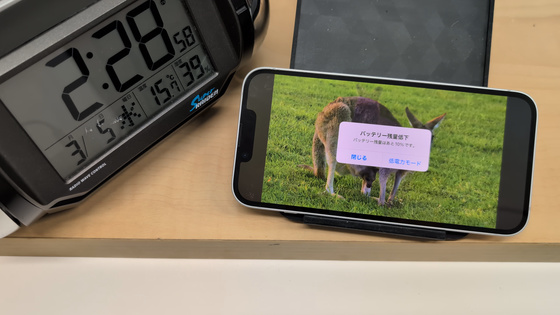
And 10 hours after the start of playback, the battery ran out and the power was turned off. Since it is 10 hours with continuous 4K video playback at maximum screen brightness and volume, it is thought that it can be used for a day without any problems with normal usage.
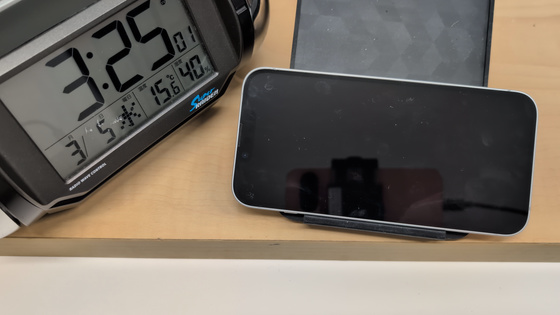
◆I tried charging the iPhone 16e battery
Next, I tried charging the battery. According to Apple's specifications, it 'supports fast charging, charging up to 50% in 30 minutes (using a 20W adapter or higher adapter and USB-C charging cable, sold separately).'
To find out how much power it can charge at, we used the Apple
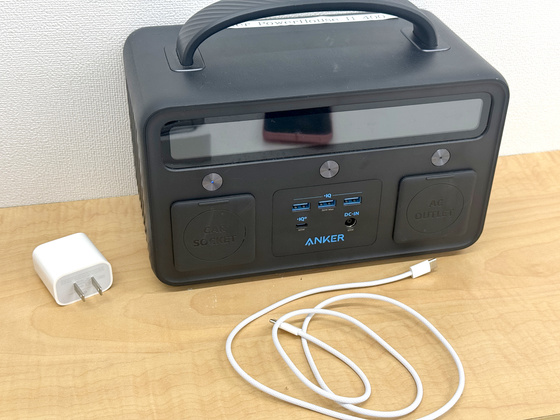
The voltage and current during charging are measured using
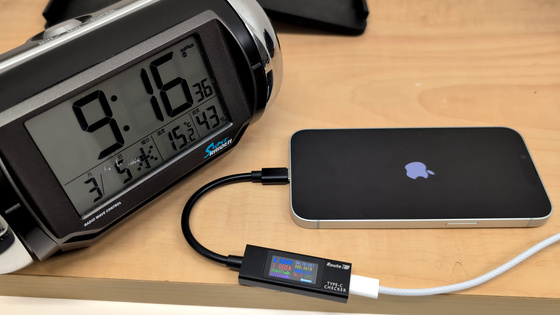
First, here is the record of charging from 0% to 100% with a 20W USB-C power adapter. It took 40 minutes from the start of charging to reach 50%. The input power was 18W up to 50%, then it gradually dropped, reaching 75% in 1 hour and 100% in 2 hours.
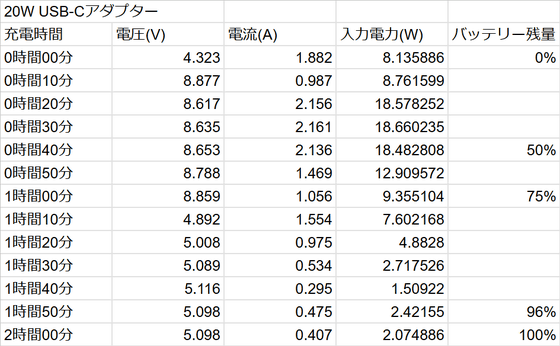
The results of connecting to the USB-C port of the Anker PowerHouse II 400 are as follows. It reached 51% in 40 minutes from the start of charging, and the input power exceeded the maximum of 23W. However, the charging speed was almost unchanged, reaching 77% in 1 hour and 100% in 2 hours from the start of charging. The iPhone 16e does not come with a power adapter, so you will need to prepare one separately, but if you purchase one, it seems that a maximum output of 30W will be fine.
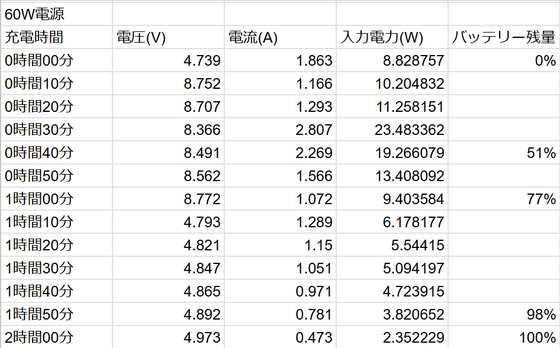
◆Benchmark test
First, I ran the iPhone 16e benchmark on
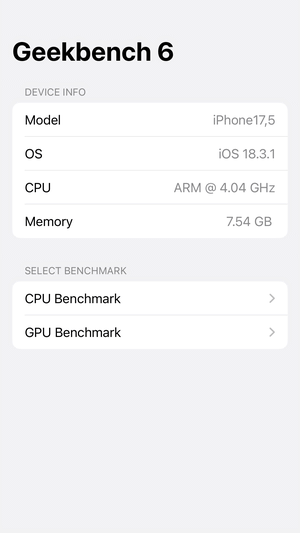
The CPU's single-core performance benchmark score was 3380.
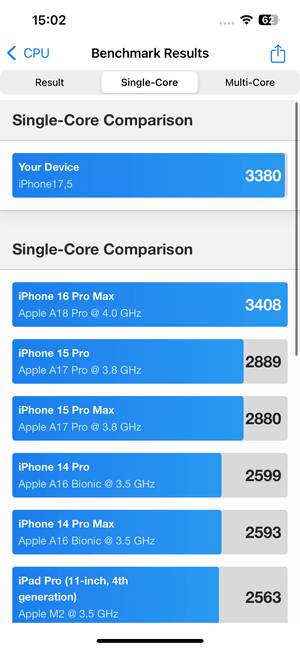
The breakdown is as follows.
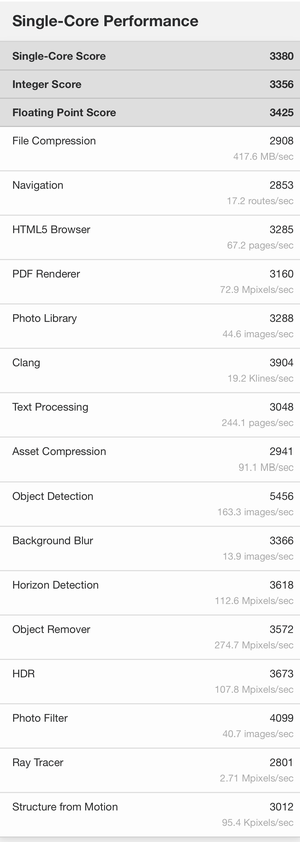
The CPU's multi-core performance benchmark score was 8359. The iPhone 16's result was 7786, so the iPhone 16e's actual score is slightly higher, but it's roughly the same.
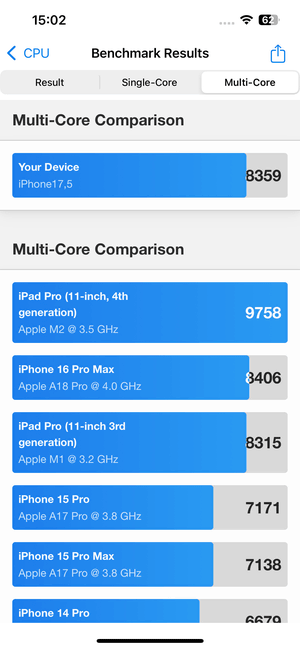
The breakdown of multi-core performance is below.

The GPU Metal performance benchmark score is 24183, which is slightly lower than the iPhone 16's 27974. Note that the iPhone 16's A18 chip has a 5-core GPU, while the iPhone 16e's A18 chip has a 4-core GPU.
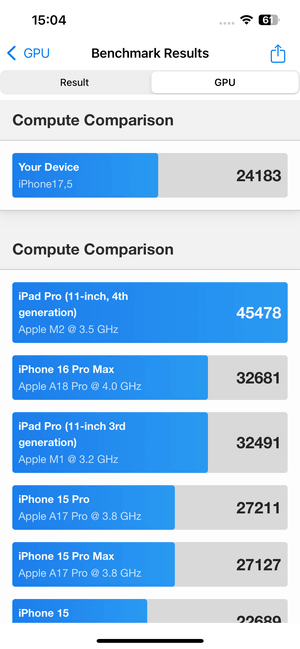
Here's a breakdown of Metal performance:
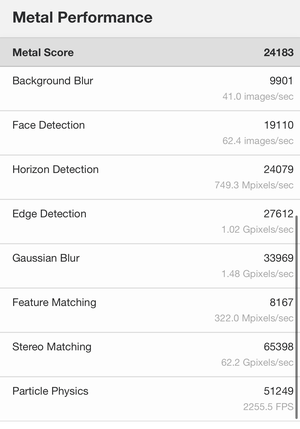
We also ran the benchmark on
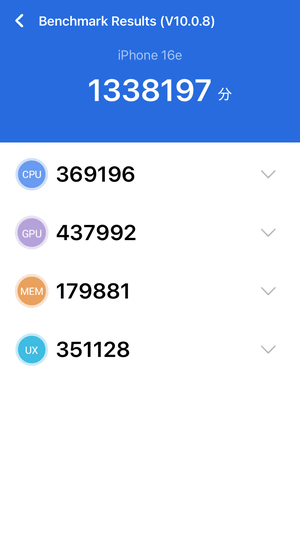
Compared to the iPhone 16 in the Antutu Benchmark rankings, the iPhone 16e ranks slightly below the iPhone 16.
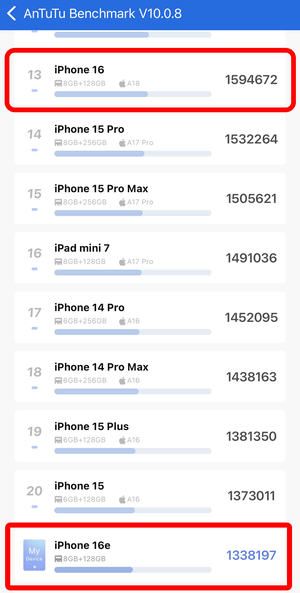
According to the Antutu Benchmark storage test, the sequential write speed was 1489.3MB/s, the sequential read speed was 818.8MB/s, and the random access read speed was 202.4MB/s and the write speed was 36.2MB/s.
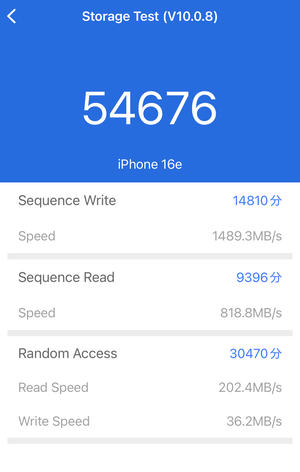
Next up we'll be checking out various photos taken with the iPhone 16e, so stay tuned.
·to be continued
Related Posts:




